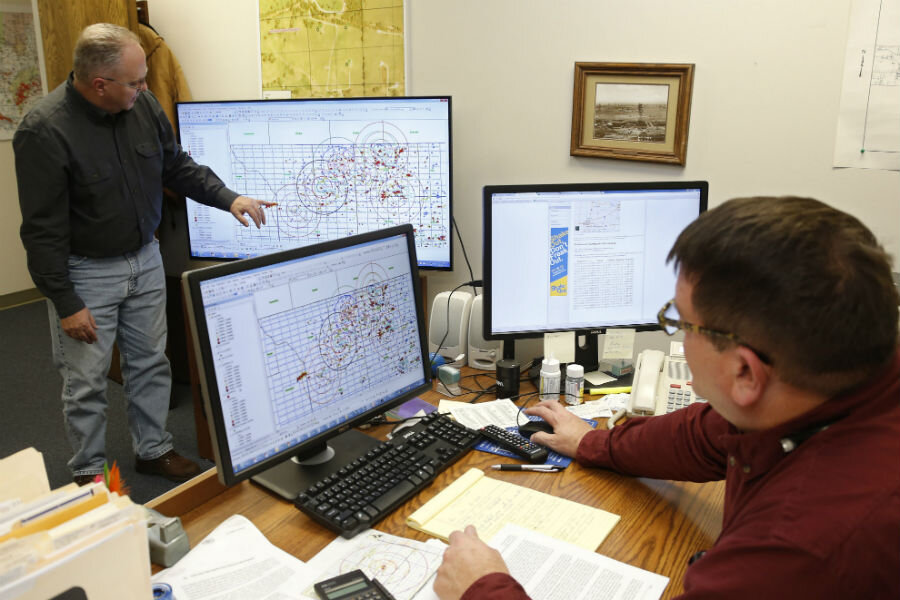'A millennium’s worth of earthquakes': What are states going to do?
Loading...
A spike in seismic activity over seven years, a flurry of reports, and then last week, more earthquakes.
Last Wednesday night, in an area where drilling for oil and gas occurs, a community in northwestern Oklahoma was hit with two quakes that registered 4.7 and 4.8 on the Richter scale, and 22 more tremors were logged throughout the area over a 13-hour period.
The panhandle state experienced 585 quakes in 2014. In 2015 there were 842, according to data from the National Earthquake Information Center (NEIC), a government agency in Colorado.
“That’s almost a millennium’s worth of earthquakes in two years,” said George Choy, a seismologist with NEIC, in an interview with the Guardian. “When you see that you suspect something is going on.”
That "something" appears to be a link between earthquakes and drilling for oil and gas, according to a report released by the US Geological Survey (USGS) last spring.
According to the agency, the practice of disposing of toxic wastewater from the drilling process deep underground destabilizes fault lines in the bedrock, adding to problems caused by the high-pressure injection of water, sand, and chemicals, or hydraulic fracturing, also known as fracking, The Guardian reports.
Choy, of NEIC, tells The Guardian that the amount of wastewater being produced in Oklahoma, which he estimates at 200 million barrels a month, puts the state at risk.
“Water is finding its way to the underground faults and there is always that possibility of a big earthquake. We are certainly concerned,” he said.
Last fall, a team of industry experts, seismologists, and academics drew similar conclusions to USGS. The StatesFirst initiative report said that hydraulic fracturing and fracking wastewater disposal is related to earthquakes occurring in nearby drilling areas, but stopped shy of recommending policy or system changes.
But the team cautioned that “a one-size-fits-all approach would not be an effective tool for state regulators.”
With state legislators heading into session for 2016, Oklahoma and Colorado regulators are handling the issue differently – but some are questioning if the actions are bold or swift enough for either state.
In Oklahoma, where a quarter of jobs are tethered to the energy industry, Gov. Mary Fallin and the State Legislature have deferred to the Oklahoma Corporation Commission, which oversees the oil and gas industries, to broker a way forward.
Cory Williams, a Democratic state representative who has urged political action, said it was unlikely that the Legislature would act.
“Absent a catastrophic loss of life or property, there will be zero reaction from the Oklahoma House or Senate,” he said in an interview with The New York Times. “They don’t want to touch it. It’s a third rail.”
In Colorado, where oil and gas industries pumped nearly $32 billion into the state’s economy in 2014, the state assembly will begin its 2016 session by considering whether or not to hold energy companies liable for earthquakes caused by drilling.
Democratic state Rep. Joe Salazar said residents were worried about a fracking group’s plans to put 20 oil and gas wells in his district. The community's reaction made him want to hold drillers responsible for any earthquakes they may cause that create property damage or physical injury, Colorado Public Radio reports.
State Sen. Ray Scott, who opposes the bill, said liability would be difficult to prove. He cited Colorado's already "strict" environmental guidelines, and warned against going after an industry that provides such a large share of revenue to the state.
“How much longer do you want to stand on the throat of the oil and gas industry to limit that amount of money that’s being generated by the state of Colorado?” Sen. Scott said.








